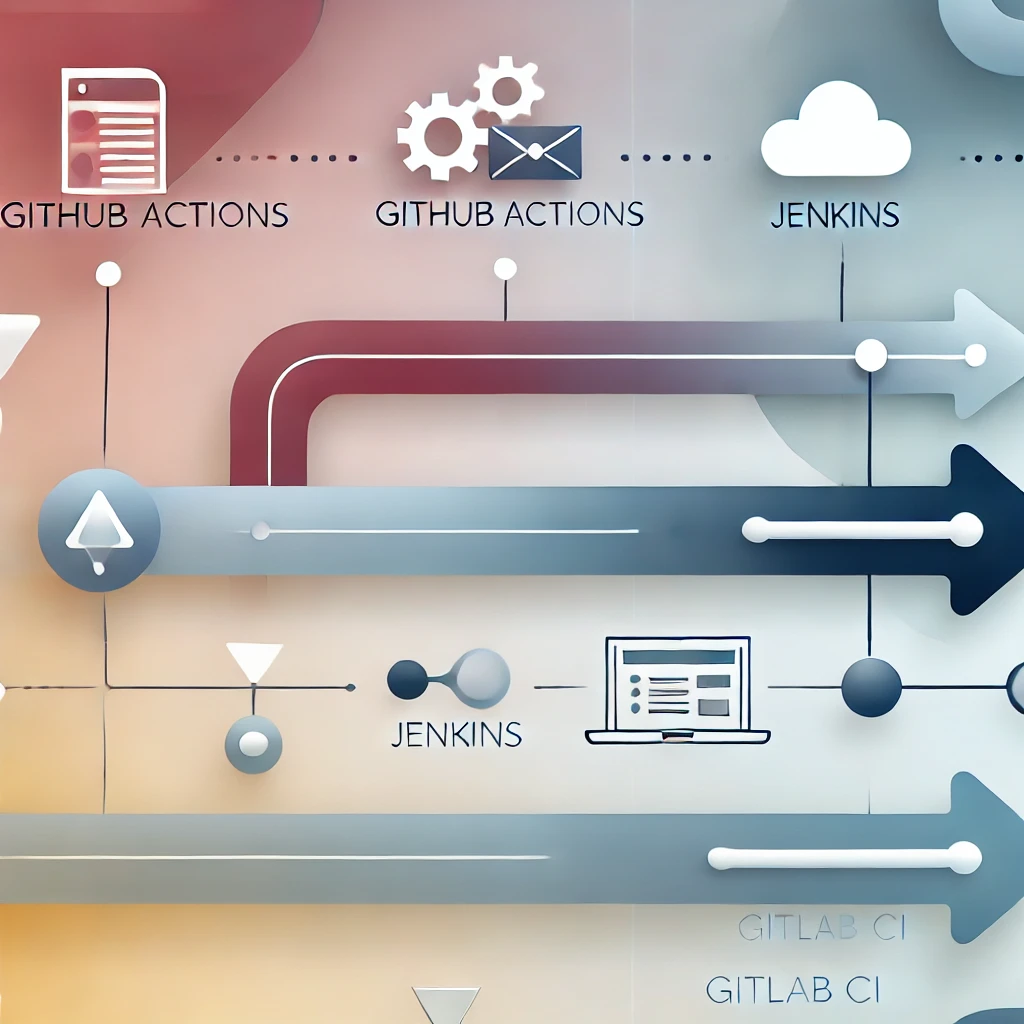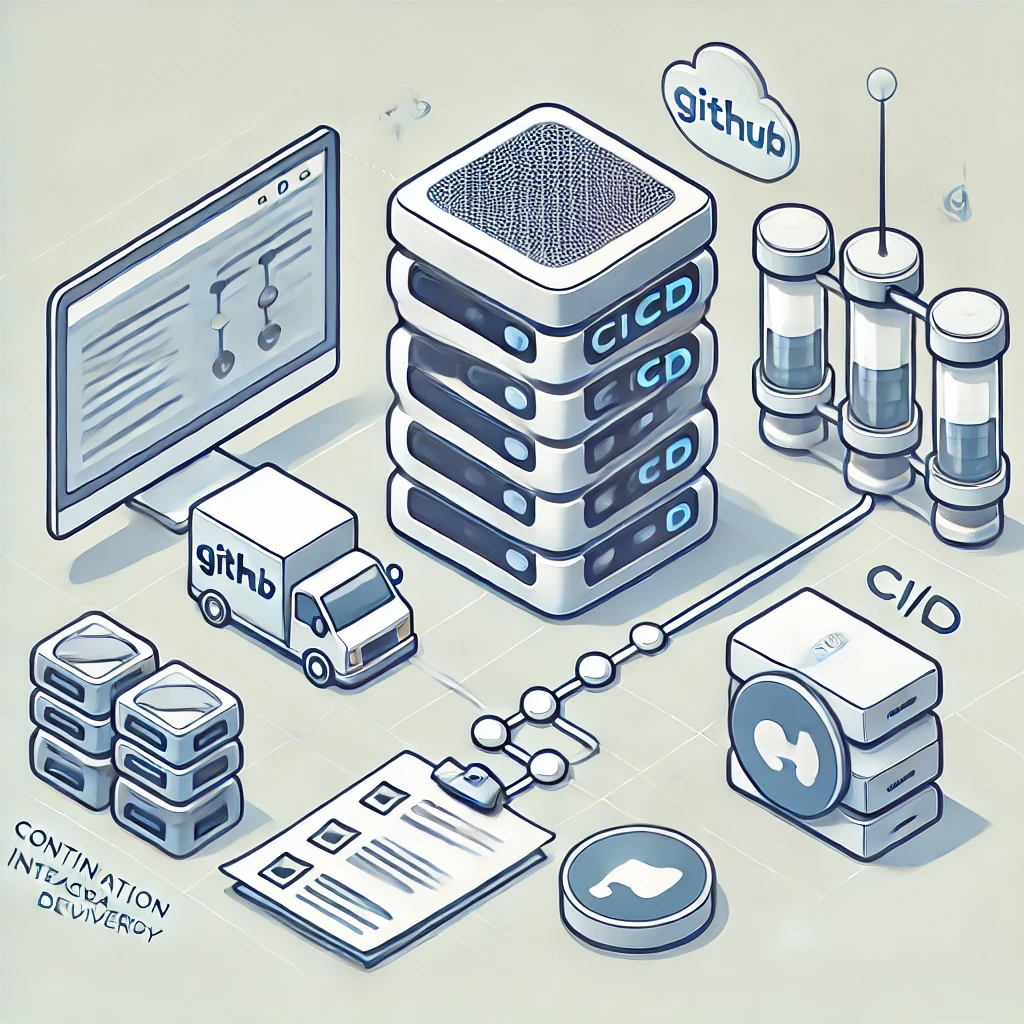
The Rise of Low-Code Platforms: Revolutionizing App Development for Businesses
Discover how low-code platforms are transforming app development for businesses, offering agility, flexibility, and cost-efficiency in 2024...
Oct 18, 2024

In today’s fast-paced development environment, Continuous Integration and Continuous Deployment (CI/CD) have become cornerstones of efficient software delivery. As development teams aim to improve speed, reliability, and scalability, choosing the right CI/CD tool is crucial. Among the most popular options are GitHub Actions, Jenkins, and GitLab CI, each offering unique advantages and capabilities.
In this article, we'll explore advanced CI/CD strategies with GitHub Actions while comparing them to other major platforms to help you make an informed decision.
GitHub Actions is an integrated CI/CD service native to GitHub, offering flexibility, automation, and a streamlined developer experience. What sets GitHub Actions apart is its deep integration with the GitHub ecosystem, allowing you to create automated workflows for a range of tasks like testing, deployment, and code scanning—all triggered directly from your repository.
Key Advantages:
Native GitHub Integration: Seamless with your GitHub repositories.
Marketplace for Actions: Prebuilt actions and workflows to speed up development.
Scalability: Supports large projects with multi-environment setups.
Customization: Highly flexible workflows using YAML, allowing for custom actions and commands.
While setting up simple CI/CD pipelines with GitHub Actions is straightforward, its true power comes to life when you adopt advanced strategies that optimize for speed, security, and scalability.
One of the standout features in GitHub Actions is its ability to run jobs in parallel using matrix builds. This can significantly cut down build time by running different tests or deployment strategies simultaneously.
name: Node CI
on:
push:
branches:
- main
jobs:
test:
runs-on: ubuntu-latest
strategy:
matrix:
node-version: [12.x, 14.x, 16.x]
steps:
- uses: actions/checkout@v2
- name: Use Node.js ${{ matrix.node-version }}
uses: actions/setup-node@v2
with:
node-version: ${{ matrix.node-version }}
- run: npm install
- run: npm testExplanation:
This workflow tests your code on three different Node.js versions (12.x, 14.x, and 16.x) in parallel, ensuring compatibility across multiple environments. Matrix builds reduce feedback time, allowing for faster issue detection.
CI/CD pipelines can become slow if dependencies need to be reinstalled every time. GitHub Actions supports caching mechanisms to prevent unnecessary re-installations.
- name: Cache npm dependencies
uses: actions/cache@v2
with:
path: ~/.npm
key: ${{ runner.os }}-node-${{ hashFiles('**/package-lock.json') }}
restore-keys: |
${{ runner.os }}-node-Explanation:
This cache action speeds up builds by storing `node_modules` or other dependencies, reducing installation time on subsequent runs.
For larger teams or production-critical applications, deploying across multiple environments like staging and production is essential. GitHub Actions makes it easy to define environment-specific workflows.
name: Deploy to Staging and Production
on:
push:
branches:
- main
jobs:
deploy:
runs-on: ubuntu-latest
steps:
- name: Checkout code
uses: actions/checkout@v2
- name: Set up Node.js
uses: actions/setup-node@v2
with:
node-version: '14'
- name: Deploy to Staging
if: github.ref == 'refs/heads/main'
run: |
echo Deploying to Staging environment...
# staging deployment commands
- name: Deploy to Production
if: github.event_name == 'push' && contains(github.ref, 'tags')
run: |
echo Deploying to Production...
# production deployment commandsExplanation:
The workflow conditionally deploys to the staging environment for every push to `main` and deploys to production only when a new tag is created, ensuring safe and controlled releases.
Secrets management is a critical part of any CI/CD process. GitHub Actions securely handles sensitive data, like API keys or credentials, using GitHub Secrets. But for an additional layer of security, it’s best to follow practices like environment variable scoping and rotating keys regularly.
env:
AWS_ACCESS_KEY_ID: ${{ secrets.AWS_ACCESS_KEY_ID }}
AWS_SECRET_ACCESS_KEY: ${{ secrets.AWS_SECRET_ACCESS_KEY }}
AWS_REGION: ${{ secrets.AWS_REGION }}Explanation:
Instead of hardcoding credentials, GitHub Actions injects them via environment variables, keeping sensitive data safe and easily manageable.
While GitHub Actions excels in many areas, it’s important to understand how it stacks up against Jenkins and GitLab CI.
Pros:
Extremely flexible with plugins and customizable pipelines.
Can run on any infrastructure, from cloud to on-premise.
Suited for complex enterprise setups.
Cons:
Steeper learning curve compared to GitHub Actions.
Requires more maintenance (e.g., Jenkins server management).
Slower adoption of modern CI/CD concepts.
Ideal For: Organizations with a mature, complex infrastructure that need advanced customization and control.
Pros:
End-to-end DevOps solution, including source control, CI/CD, and security scanning.
Great for integrated projects with GitLab repositories.
Easy to set up auto-deploys with Kubernetes.
Cons:
Less flexible for non-GitLab projects.
Limited scalability for very large teams without paid tiers.
Ideal For: Teams using GitLab for source control who want an all-in-one DevOps platform with minimal configuration.
Pros:
Seamless GitHub repository integration.
Massive marketplace for pre-built actions.
Great for small to medium-sized teams.
Cons:
Less flexibility in environments outside of GitHub.
Limited historical logging and storage without upgrading to a paid plan.
Ideal For: Developers who are already using GitHub and want a tightly integrated CI/CD solution with minimal setup.
Use Separate Workflows for Build and Deploy: This ensures that your build pipeline is isolated from your deployment logic, reducing complexity.
Automate Tests and Linting: Automating both unit tests and linting in your pipeline will help maintain code quality while preventing regression.
Monitor Workflow Logs: Regularly check logs for bottlenecks or failures. Set up alerts for failed builds or unusual execution times.
Secure Your Pipelines: Regularly review permissions, ensure you use secrets properly, and rotate credentials as needed.
Optimize with Artifacts: Use artifacts to save build outputs, logs, or test results that you want to share between jobs or workflows.
As development teams evolve and the demand for faster deployments grows, adopting advanced CI/CD strategies is more important than ever.
GitHub Actions, with its simplicity, marketplace integrations, and scalability, is a great fit for modern teams. Whether you’re working on a simple project or a complex, multi-environment application, these advanced strategies will help you optimize your pipeline and deliver more efficiently.
While Jenkins and GitLab CI have their own merits, GitHub Actions is poised to be the go-to CI/CD tool for developers already within the GitHub ecosystem. By leveraging the full power of GitHub Actions, you can streamline your workflow, enhance your deployment practices, and focus more on building great software.
Follow PosterumSoft on LinkedIn: linkedin.com
Follow PosterumSoft on X: x.com
Follow us on Medium: medium.com
Check PosterumSoft on Upwork: upwork.com

Discover how low-code platforms are transforming app development for businesses, offering agility, flexibility, and cost-efficiency in 2024...

Learn how to set up a CI/CD pipeline using GitHub Actions to deploy your application to AWS Elastic Beanstalk, a powerful and easy-to-use platform...